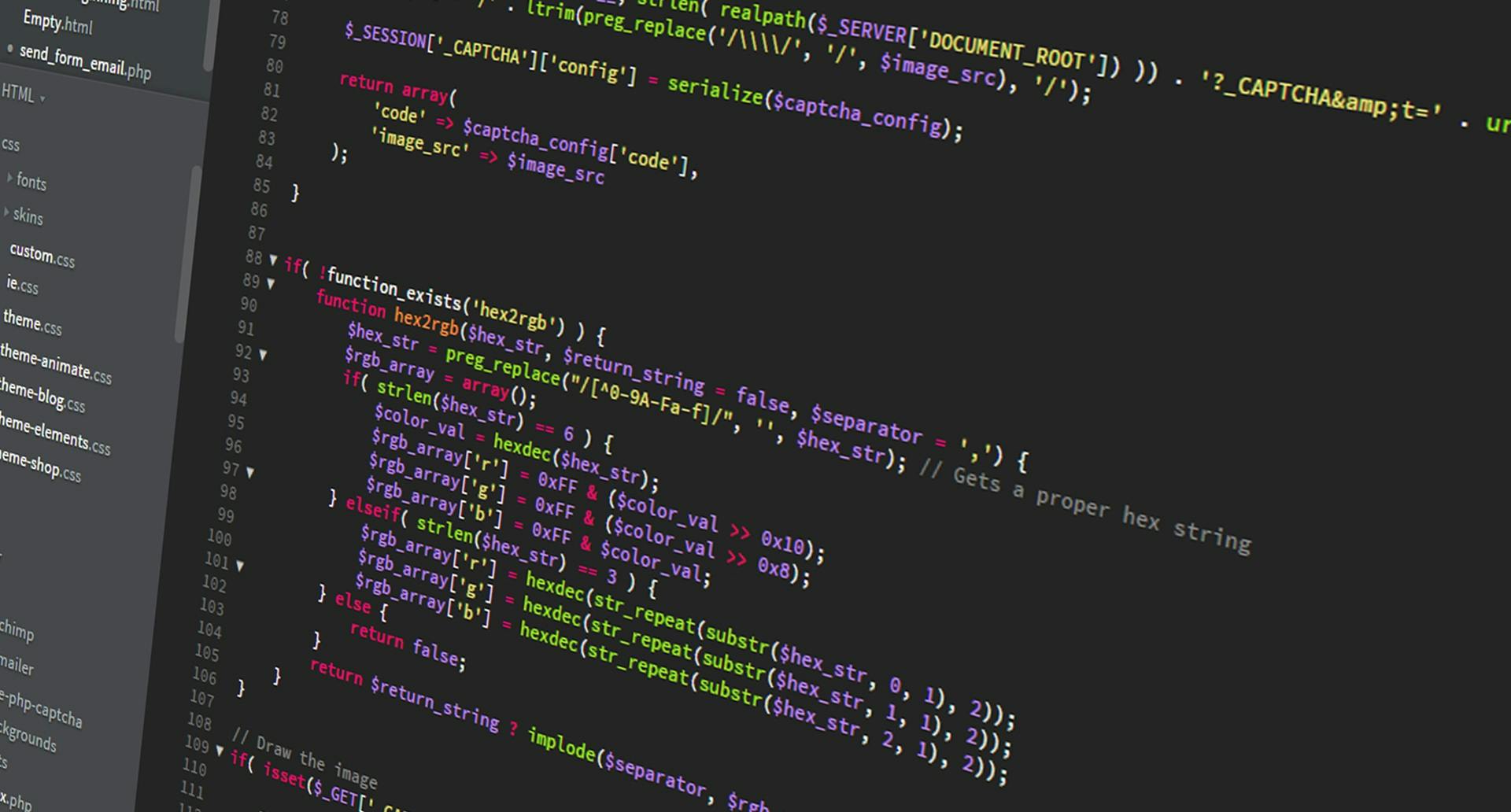
Artificial Intelligence is transforming the web development landscape, offering new possibilities for automation, personalization, and enhanced user experiences. As we move into a new era of intelligent web applications, understanding the intersection of AI and web development has become essential for modern developers.
This article explores how AI technologies are being integrated into web development workflows, examines real-world applications, and looks ahead to emerging trends that will shape the future of the web.
AI in Development Workflows
Modern development tools are increasingly incorporating AI to assist developers:
- Intelligent code completion and suggestions
- Automated testing and debugging
- Code optimization and refactoring recommendations
- Natural language to code conversion
- Automated documentation generation
- Bug prediction and prevention
// Example of AI-assisted code generation
function generateComponent(description) {
// AI analyzes the description
// and generates component code
return AICodeGenerator.create(description);
}
// Example of AI-powered refactoring
function optimizeCode(codebase) {
const issues = AICodeAnalyzer.findIssues(codebase);
const optimizedCode = AICodeRefactor.apply(codebase, issues);
return optimizedCode;
}Tools like GitHub Copilot, TabNine, and Kite are revolutionizing how developers write code, reducing repetitive tasks and allowing teams to focus on solving complex problems rather than writing boilerplate code.
Enhancing User Experiences
AI enables more personalized and intuitive user experiences through:
- Smart content recommendations
- Chatbots and virtual assistants
- Predictive user behavior analysis
- Dynamic content optimization
- Personalized user journeys
- Voice and natural language interfaces
- Emotion detection and sentiment analysis
Companies like Netflix, Amazon, and Spotify have demonstrated how AI-driven recommendations can significantly improve user engagement and satisfaction, creating experiences that feel custom-tailored to each individual user.
Real-World AI Applications in Web Development
E-commerce Personalization
AI algorithms analyze browsing patterns, purchase history, and demographic data to create highly personalized shopping experiences. This includes custom product recommendations, dynamic pricing strategies, and targeted promotions that significantly boost conversion rates.
Content Management
AI tools now help content creators and marketers by generating content ideas, optimizing headlines, suggesting SEO improvements, and even writing draft content. These tools analyze top-performing content across the web to inform their recommendations.
Conversational Interfaces
Advanced natural language processing has enabled the development of sophisticated chatbots and virtual assistants that can understand context, remember conversation history, and provide helpful, human-like responses to user queries.
Accessibility Improvements
AI is making the web more accessible by automatically generating image descriptions, providing real-time captioning for video content, and adapting interfaces to accommodate users with different abilities.
The Future of AI in Web Development
Automated Testing & QA
AI-powered testing tools can automatically identify bugs, security vulnerabilities, and performance issues. These systems will increasingly be able to fix common problems without human intervention.
Advanced systems will simulate thousands of user scenarios in minutes, uncovering edge cases that human testers might miss.
Design Generation
AI systems will generate UI designs based on project requirements, brand guidelines, and target audience characteristics, drastically accelerating the design process.
Expect AI to create not just static designs but fully functional prototypes that can be tested with users immediately.
Code Evolution
Self-improving codebases that evolve based on usage patterns, automatically refactoring and optimizing themselves for better performance and maintainability.
Future systems may deploy machine learning models that continuously analyze application metrics and implement optimizations without developer intervention.
Adaptive Interfaces
Web interfaces that dynamically adapt to individual users based on their behavior, preferences, and needs, delivering truly personalized experiences.
These systems will use reinforcement learning to continuously optimize UI elements for maximum engagement and usability.
Low-code/No-code Platforms
AI-powered development platforms will enable non-technical users to create sophisticated web applications through natural language instructions and visual interfaces.
This will democratize web development and enable rapid prototyping and deployment of new ideas.
Ethical AI Integration
As AI becomes more prevalent, frameworks and best practices for ethical AI implementation will become standard in web development workflows.
This includes bias detection tools, explainable AI components, and privacy-preserving technologies.
Implementing AI in Your Web Projects
Getting started with AI in web development doesn't have to be overwhelming. Here are practical steps to begin integrating AI into your workflow:
Start with Pre-built APIs
Services like Google Cloud AI, AWS AI Services, and Azure Cognitive Services offer ready-to-use APIs for common AI capabilities such as image recognition, language processing, and recommendation engines.
// Example: Using a pre-built sentiment analysis API
async function analyzeSentiment(text) {
const response = await fetch('https://api.ai-service.com/sentiment', {
method: 'POST',
body: JSON.stringify({ text }),
headers: { 'Content-Type': 'application/json' }
});
return response.json();
}
Experiment with Open Source Tools
Libraries like TensorFlow.js and Brain.js allow you to run machine learning models directly in the browser. This enables AI features without requiring server-side processing.
// Example: Training a simple model with TensorFlow.js
const model = tf.sequential();
model.add(tf.layers.dense({units: 1, inputShape: [1]}));
model.compile({loss: 'meanSquaredError', optimizer: 'sgd'});
// Train the model with some data
const xs = tf.tensor2d([1, 2, 3, 4], [4, 1]);
const ys = tf.tensor2d([1, 3, 5, 7], [4, 1]);
model.fit(xs, ys, {epochs: 100});
Consider Edge ML
Deploying lightweight machine learning models that run directly on users' devices can reduce latency and address privacy concerns by keeping sensitive data local.
Technologies like TensorFlow Lite and WebML are making edge AI more accessible for web developers.
Adopt AI Development Tools
Integrate AI-powered development tools like GitHub Copilot, Tabnine, or Kite into your workflow to boost productivity and learn from the code suggestions they provide.
These tools can be particularly helpful for learning new frameworks or programming languages.
Challenges and Ethical Considerations
While AI offers tremendous benefits for web development, it also presents unique challenges that developers must address:
Bias and Fairness
AI systems can perpetuate and amplify existing biases if trained on biased data. Developers must actively work to identify and mitigate these biases.
Solution: Diverse training data and regular auditing of AI outputs for potential bias.
Privacy Concerns
AI often requires large amounts of user data to function effectively, raising important questions about data collection, storage, and usage.
Solution: Implement privacy-by-design principles and be transparent about data practices.
Performance Overhead
Complex AI models can impact page load times and application performance, especially on lower-end devices.
Solution: Optimize models for web deployment and consider server-side processing for complex tasks.
Conclusion: Embracing the AI-Powered Web
The integration of AI into web development represents one of the most significant shifts in our industry since the advent of responsive design. As AI technologies continue to mature, they will fundamentally transform how we build, test, and optimize web applications.
Developers who embrace these technologies now will be well-positioned to create next-generation web experiences that are more intelligent, personalized, and accessible than ever before. The key is to start small, experiment frequently, and always keep the focus on using AI to solve real user problems rather than implementing it for its own sake.
As we move forward, the line between web developers and AI specialists will continue to blur, creating exciting new career opportunities and possibilities for innovation. The future of web development is intelligent, and that future is already here.



